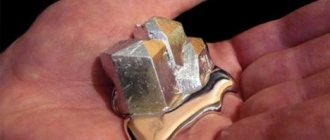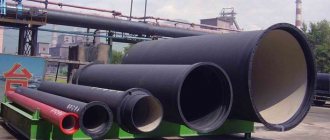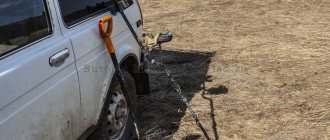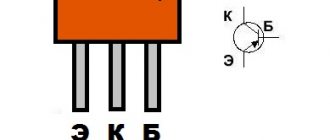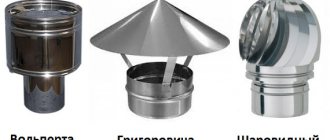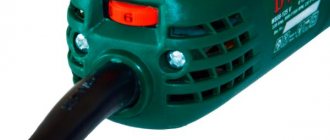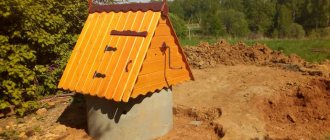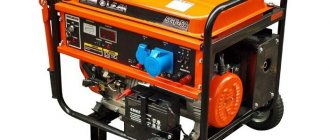Along with discrimination, target detection depth is one of the most important indicators of a metal detector. It depends, first of all, on the device itself, the coil used and external factors, which will be discussed below. We will also consider how to increase the sensitivity of the device and whether it is generally worth focusing on this indicator.
So, we list the factors that directly affect the search depth:
- Operating frequency of the device. All other things being equal, the higher the frequency, the shallower the detection depth, but the better the sensitivity to small targets.
- Coil diameter. The larger it is, the deeper the device “sees”.
- Device settings. First of all, it concerns the given level of sensitivity.
- Soil mineralization. The higher, the shallower the detection depth.
- Soil moisture. In most cases, after rain, the device is able to detect deeper targets.
- Target characteristics. The metal detector sees larger, regular-shaped targets deeper than small objects of incomprehensible shape. Also, a lot depends on the metal, oxidation state, location, etc.
- Other factors: the presence of interference from power lines or other devices, the power of the device itself, batteries, and others.
How to increase search depth?
The most common and effective way to increase depth is to install a larger reel. This way you can increase the depth by more than 30%. But this method is only suitable for unlittered areas, otherwise a large coil simply will not “see” a coin next to a piece of an axe, for example. In such conditions, it is worth using a small coil - a “sniper”.
Here are other ways to increase search depth:
- Correct setting of the operating frequency, if the device allows this.
- Setting the maximum permissible sensitivity level. A sensitivity level that is too low will lead to a decrease in detection depth, and a sensitivity level that is too high will result in false alarms of the device.
- Ground balancing, manual or automatic. The less soil mineralization affects the device, the better.
- It’s worth trying to walk around with the device after a good rain or in dew. It may be possible to catch a deep signal. But it is better to do this after the snow melts or during prolonged autumn rains, when the ground gets wet to a decent depth. However, this should only be done on weakly mineralized soils, otherwise the effect may be the opposite.
- Use of high-quality power sources. It doesn't matter whether it's batteries or rechargeable batteries.
- It is worth avoiding various obstacles: try not to walk under power lines and near other diggers.
Correct search behavior is the key to good depth
Why do novice treasure hunters lack the depth of their search? The reason most often lies in aggressive behavior. Sharp swings of the coil, jumping, or insufficient distance between the coil and the ground always lead to a loss of search efficiency.
To detect a target at maximum depth, you need to work with a metal detector “with feeling, sensibly, and with precision.” Move the sensor slowly, bringing it as close to the ground as possible. Avoid superficial searching where the metal detector is not actually operated. This happens just with wide scales.
There are models with a fast response function; they are configured in such a way that the detector is able to pick up even the weakest signals during sudden movements. Of course, you can immediately buy such a metal detector and not think about the behavior, but it is at the very early stages of the search business that the correct feeling of searching is formed. To become a real professional, you will have to learn to search competently.
Headphones are a powerful tool in increasing search depth. The threshold tone makes it possible to determine by sound which object lies underground. Often, extraneous noises distract the digger, “leading” him away from the find. With headphones, you will be able to pick up even the weakest signals and will certainly not miss anything important.
Using various methods, you will very soon begin to feel your metal detector, and you will be able to achieve a really great search depth.
Along with discrimination, target detection depth is one of the most important indicators of a metal detector. It depends, first of all, on the device itself, the coil used and external factors, which will be discussed below. We will also consider how to increase the sensitivity of the device and whether it is generally worth focusing on this indicator.
So, we list the factors that directly affect the search depth:
- Operating frequency of the device. All other things being equal, the higher the frequency, the shallower the detection depth, but the better the sensitivity to small targets.
- Coil diameter. The larger it is, the deeper the device “sees”.
- Device settings. First of all, it concerns the given level of sensitivity.
- Soil mineralization. The higher, the shallower the detection depth.
- Soil moisture. In most cases, after rain, the device is able to detect deeper targets.
- Target characteristics. The metal detector sees larger, regular-shaped targets deeper than small objects of incomprehensible shape. Also, a lot depends on the metal, oxidation state, location, etc.
- Other factors: the presence of interference from power lines or other devices, the power of the device itself, batteries, and others.
Read also: What is the difference between a phytolamp and a regular lamp?
Conclusion
Most even entry-level devices are capable of detecting a coin at a depth of 15 to 40 cm. For example, the simplest Garrett ACE150 and Garrett ACE250 “see” a 5-kopeck coin of the USSR at a depth of up to 23 cm. But the semi-professional Garrett AT Pro is able to detect the same coin already at a depth of up to 37 cm. The numbers are average, of course. But is greater detection depth needed for coin-sized targets? In most cases, no. Firstly, you will quickly get tired if each of your holes is half a meter long. And secondly, most of the finds lie precisely at the detection depth of most instruments. There are exceptions, of course, but in this case it is enough to have a larger diameter coil.
When choosing a new device, it is better to focus on more important characteristics, such as discrimination. Although depth should not be discounted, in some situations it may be more important than the same discrimination, for example in areas with very little metal debris. Or on carved-out tracts, where the remaining finds are located at extreme depths. Choose a device, its coil and settings depending on the specific situation.
Improve your metal detector search depth and save money?
At the same time, it cannot be denied that from year to year, in fields that are considered almost empty, lucky search engines, often new to the hobby, turn up very worthy finds. Moreover, sometimes these are not even single valuable coins, metal plastic or household items, but entire complexes, that is, treasures.
How is that?
The field, which, as the Kopari themselves put it, is well-trodden, beaten, broken, and catching a Soviet coin is considered a joy, and then - bang! - some newcomer taxis towards it and at the first signal snatches the coin treasure. By the way, I just gave an example of a real case from the 2018 season. The man took the device in his hands for the second time in his life, and from a field located less than 20 kilometers from the city, where the diggers had stopped going a long time ago, he recovered a treasure of more than 250 silver coins. I saw that treasure with my own eyes!
You can, of course, speculate on why this happens, talk about the impact of agricultural work, the same annual plowing, do not forget about the factor of luck, as well as the difference in functionality, characteristics - in a word, in the search capabilities of metal detectors, and much more .
And all this objectively takes place!
But, it seems to me, in addition to reasons that are truly beyond our control, some of which I mentioned above, there are also very dependent ones. Still, the human factor must be put at the forefront here, and specifically we are talking about the difference in approaches to search. I believe that many people have more than once had the opportunity to observe such a picture on trips, and maybe they have also noticed something similar in themselves: one is rushing through the fields as if scalded, the reel almost whistlingly cuts through the air, the other this very reel is fifteen centimeters away - holds twenty from the surface of the earth when swinging. The third one, when moving the coil, has gaps - there are more white spots than the areas over which the coil passed.
Is this a familiar picture?
I’ll also add that there are individuals - and, in fact, there are not so few of them - who sincerely believe that all you need to do is buy an expensive professional device, and that’s it, now all the treasures are his! Well, what about it? After all, he has a cool metal detector, which must look for valuable artifacts on its own. That is, some people don’t even bother to read the manual for the metal detector. As a result, they manage to be so clever with the settings that the device is only able to see a large coin pressed closely to the reel or, on the contrary, it produces a bunch of false positives with each swing. The list of our mistakes, as you understand, can be very long... So, without any doubt, we missed many, many finds for one reason or another.
With all this, it is a fact: the cream has really been skimmed a long time ago, that is, most of the easily accessible, relatively shallow targets that give a clear, unambiguously useful signal on any metal detector have already been dug up.
Therefore, the complaints of instrument search enthusiasts about the widespread knockout of fields are not surprising, because there are real reasons for this.
What should I do? What to do?
Yes, it seems like the course of action is obvious: forward to the unknown, that is, move away from inhabited places, look for natural areas that you can easily reach even in well-prepared off-road vehicles. Yep, that's right.
True, every third, if not second, is so smart... In addition, not everyone has the opportunity to go into the wilderness for several days to find a treasured unbroken tract.
And is it necessary?
After all, for very, very many adherents of our hobby, instrument search is simply a way to interestingly and usefully spend a day off in nature. People are not at all thrilled to climb into the untrodden wilds in pursuit of a ghostly fortune.
Maybe buying a powerful, most sophisticated device is the way out?
Well, in principle, yes, it’s an option! Especially if you are sure that you will be able to understand such a metal detector and use it as efficiently as possible. Then, you will definitely have advantages over the bulk of search engines.
But, again, purchasing a more advanced modern professional-level metal detector, and even, ideally, a set of several coils for it, is not affordable for everyone. And would you want to spend time mastering such technology for the sake of several trips a month? Not everyone literally chooses to cop as soon as they have a little free time.
The question again: what to do?
One of the most budget-friendly options for solving the problem would be to purchase an additional search coil for the metal detector that you already have. Let me make a reservation right away: you shouldn’t expect miracles, but when using a reel with a diameter different from most standard reels, the chances of success increase. I'll explain why.
Let's look at the conditions familiar to the majority of Russian search engines: a tract is a well-groomed field, plowed or mowed, or a forest clearing. Quite extensive open spaces. The solution suggests itself - a large-diameter search coil. Good move!
I repeat, you shouldn’t expect a miracle, but practice shows that sometimes a very serious result is obtained by using a large steering coil (from 15 inches in diameter) in a place where a lot of people have gone before you, but almost all of them with standard coils. However, with a large coil, misses during wiring are practically reduced to nothing, and the depth of target detection increases significantly.
The fly in the ointment - where would we be without it, unfortunately - these coils are very specific. To achieve the maximum effect, you need suitable search conditions, at least a more or less flat surface, an extremely low amount of metal debris, the absence of thickets, overgrown grass, and the like. In addition, the larger the diameter of the coil, the more strongly the level of soil mineralization has an impact on the stability of operation. In general, a 15-inch steering wheel is definitely not the only reel, so to speak, for every day.
With a small-diameter coil - a sniper - it’s a similar story, but exactly the opposite. A small-diameter coil (6-8 inches or less) has proven itself brilliantly in a small area saturated with metal debris. Open fields are clearly not for a sniper - you will be tortured to swing with such and such a diameter. Usually these are places where residential or outbuildings, peasant yards and the like once stood, events were held, as well as foundations left over from buildings. The smaller the diameter of the search coil, the fewer targets it hits at the same time; accordingly, unwanted junk targets are much less likely to block the response from useful targets. The smaller the diameter of the search coil, the greater the chance of catching a good find among the abundance of metal debris. It is clear that you don’t really drive this little one every day either.
What have we come to?
I propose to consider an option that has been tested by thousands of users on almost all known models of metal detectors, which actually improves the quality of search. We are talking about coils of increased diameter (compared to standard ones). Not to be confused with large diameter coils!
The most famous and popular of them:
Reel NEL Tornado 12x13″ for Ace 150, 250, 350, Euro, 400;
NEL Storm 13x14″ reel for Fisher F2/F4;
Reel NEL Storm 13x14″ for Fisher F70/F75;
Reel 13.5″x13″ Nokta AF35 Black.
In fact, the above-mentioned manufacturers have a huge selection of coils for any search conditions and tasks, but now I’m talking about the most popular and widely known models. The diameter of 12-13 versus 9-11 inches of most standard coils is an increase in the detection depth; accordingly, very weak, barely audible, often even without VDI numbers on the display, responses from deep and shallow targets become obvious and absolutely clearly identifiable.
That is, all those metal objects that your predecessors passed over because the device simply could not detect them due to the maximum depth of occurrence or incorrectly identified them are yours. We will also add to this a reduction in the number of white spots and omissions during wiring. On the other hand, if the metal debris is not a continuous carpet, then coils of increased diameter cope well with such search conditions, naturally, inferior to snipers, but, nevertheless, they work acceptable. As a result, we get the same search coils for every day, which are noticeably superior to standard coils in detection depth and coverage area. Not a bad option for embossed fields, isn't it?
External factors that you cannot influence, but should be aware of
In principle, we have examined, if not all, then many aspects of the question of how to increase the depth of operation of the device. At this point you can finish your theoretical lessons, pick up metal detectors and test your acquired knowledge in practice. But there are a number of external factors that we cannot influence in any way. It has been noted that the depth of finds is directly or inversely dependent on them, so it is worth mentioning these factors:
- Searching in wet soil allows you to detect targets at the greatest depth. Well, that’s understandable, the conductivity of wet soil is higher. Therefore, you can work more efficiently in early spring or after rain than in summer or during drought;
- The search depth increases at night. Again, this is due to increased humidity;
- It has been noted that an increase in depth is observed before a thunderstorm. I don’t know for sure what factor is causing this, but I think it’s due to an increase in the electrical conductivity of the soil.

